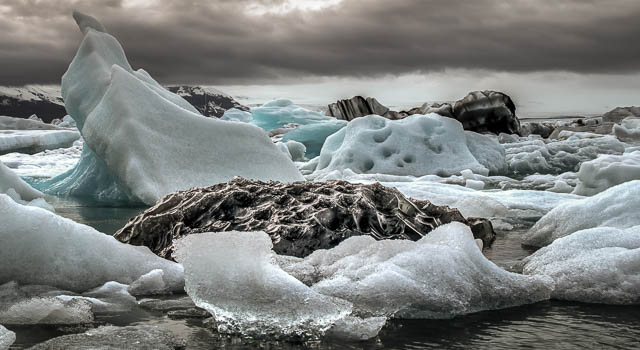Life and death of a glacier

I was conducting fieldwork in southern Iceland to survey the microbial life in glaciers – specifically the basal ice deep within a glacier called svínafellsjökull. On a trip for supplies we stopped at Jökulsárlón lagoon, which is a large river formed from glacial meltwater running into the ocean and carrying icebergs with it. Having spent the previous week identifying ice types and carefully taking samples, it was interesting to see the wide range of ice types so clearly displayed in the lagoon – all calved from the glaciers terminating in the lagoon. Note especially the piece with holes on (not the black piece) – these are cryoconite holes which form on the glacier surface. Cryoconite holes are known to have a distinctive microbial ecosystem of their own sustained by sunlight and photosynthesis, however nobody had looked in detail into the possibility of different ice types each having their own microbial ecosystem. In our research we have classified different ice types to see if they each have distinctive microbes living in them. Finding out which microbes live inside glaciers can help us work out whether or not the glacier is a living environment like the soil and oceans, or frozen life like the food in your freezer. This is relevant to understanding a wide range of important processes including the climate and soil formation.
This photo was taken with a fast shutter speed to freeze the water movement, and five exposures were taken. These exposures were then combined to produce a high dynamic range (HDR) image which helps to capture the wide range in brightness across the scene. Tonemapping was performed globally to bring out the detail in the HDR image, and local adjustments were made for the same reason – specifically the sky was darkened and the black ice in the centre was made brighter. These adjustments were made with the objective of presenting a realistic representation of the scene with suitable exposure throughout.